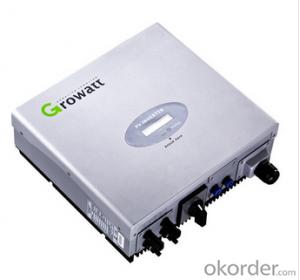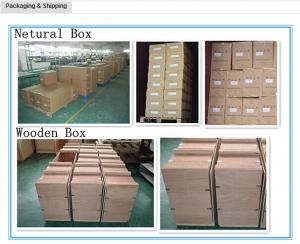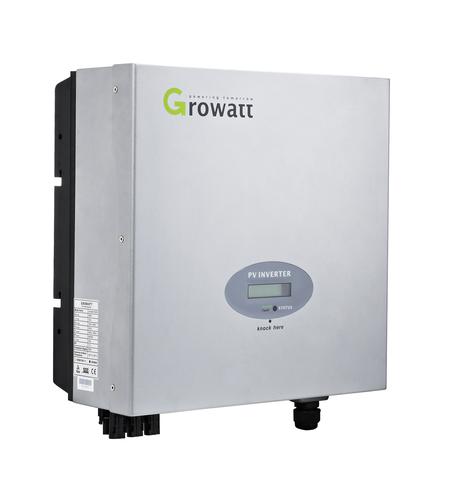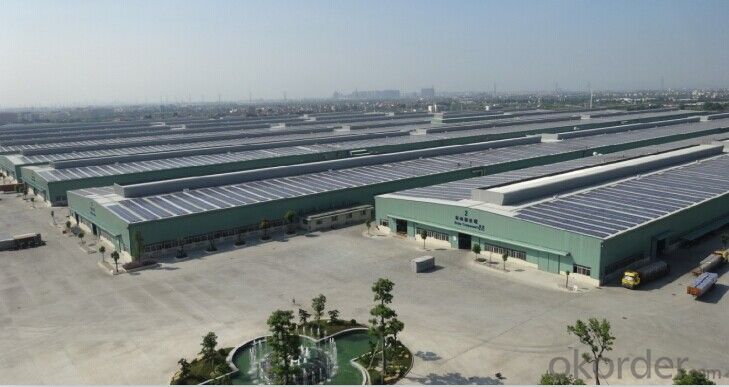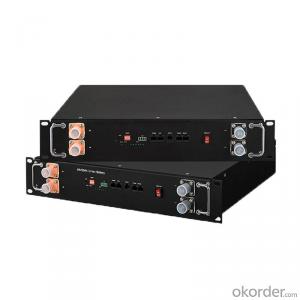Best Rv Solar Inverter 4000W-5000W Grid Connected Solar System
- Loading Port:
- Shekou
- Payment Terms:
- TT or LC
- Min Order Qty:
- 10 pc
- Supply Capability:
- 10000 pc/month
OKorder Service Pledge
OKorder Financial Service
You Might Also Like
Grid Connected Solar inverter 4000W-5000W
Maximum efficiency of 97.8% and wide input voltage range
Internal DC Switch
Transformerless GT topology
Compact design
MTL-String
Bluetooth/ RF technology/ Zigbee/ Wi-Fi
Sound control
Easy installation
Comprehensive Growatt warranty program
Maximum efficiency of 97.8%
wide input voltage range
Internal DC Switch
Transformerless GT topology
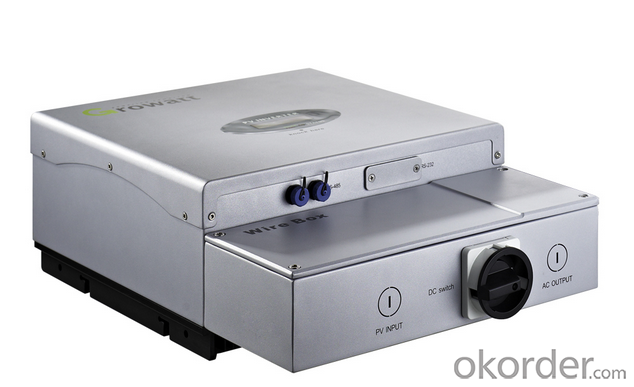
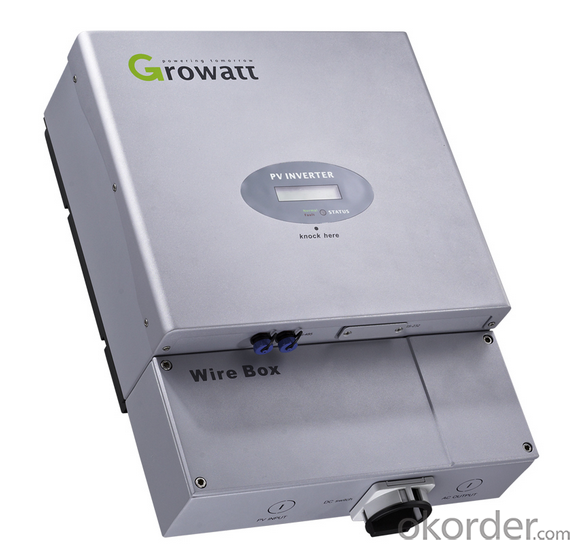
Communications
> RS485 /GPRS interfaces
> Computer monitoring software
Safety
> Full protection functions:DC reverse polarity, AC short-circuit protection, ground fault monitoring, grid monitoring, integrate all-pole sensitive, leakage current monitoring unit.
> Standards complied: EN61000-6-1, EN61000-6-2, EN61000-6-3, EN61000-6-4,EN61000-3-2, EN50178, VDE0126-1-1,IEC-62109
Technical Specifications
4000TL | 4400TL | 5000TL | |
| Inputdata | |||
| Max.DCpower | 4600W | 5000W | 5800W |
| Max. DC voltage | 580V | 580V | 580V |
| StartVoltage | 120V | 120V | 120V |
| PV voltage range | 90V-580V | 90V-580V | 90V-580V |
| MPP voltage range/ Nominal voltage | 95V-580V/360V | 95V-580V/360V | 95V-580V/360V |
| Full load DC voltage range | 250V-500V | 250V-500V | 250V-500V |
| Max. input current/ per string | 20A/20A | 20A/20A | 20A/20A |
| Number of independent MPP trackers /strings per MPP tracker | 1/3 | 1/3 | 1/3 |
| Efficiency | |||
Max.efficiency | 97.8% | 97.8% | 97.8% |
| Rated AC output power | 3680W | 4200W | 4600W |
| Max. AC power | 4000W | 4400W | 5000W |
| Max. output current | 16A | 21A | 25A |
| AC nominal voltage; range | 220V/230V/240V 180Vac-280Vac | 220V/230V/240V 180Vac-280Vac | 220V/230V/240V 180Vac-280Vac |
| AC grid frequency; range | 50Hz, 60Hz;±5Hz | 50Hz, 60Hz;±5Hz | 50Hz, 60Hz;±5Hz |
| Power factor | 1 | 1 | 1 |
| THDI | <3% | <3% | <3% |
| AC connection | Single phase | Single phase | Single phase |
| Protection Devices | |||
| DC reverse polarity protection | yes | yes | yes |
| DC switch rating for each MPPT | yes | yes | yes |
| Output over current protection | yes | yes | yes |
| Output over voltage protection-varistor | yes | yes | yes |
| Ground fault monitoring | yes | yes | yes |
| Grid monitoring | yes | yes | yes |
| Integrated all-pole sensitive leakage current monitoring unit | yes | yes | yes |
| Generaldata | |||
Dimensions(W/H/D) in mm | 406/406/192 100% | 406/406/192 21KG | 406/406/192 |
| Features | |||
DC connection AC connection Display Warranty: 5years/10years | H4/MC4(opt) Screw terminal LCD yes/opt | H4/MC4(opt) Screw terminal LCD yes / yes / yes/opt | H4/MC4(opt) Screw terminal LCD yes / yes / yes/opt |
| Certificates and ApprovalsCE, VDE 0126-1-1, DK5940, G83, G59, RD1663, EN50438, IEC 62109, ENEL-Guide |
- Q:Can a solar inverter be used with energy storage systems?
- Yes, a solar inverter can be used with energy storage systems. In fact, integrating an energy storage system with a solar inverter allows for the efficient utilization and management of solar-generated electricity. The inverter not only converts the DC power from the solar panels into AC power but also controls the charging and discharging of the energy storage system, ensuring optimal usage of stored energy.
- Q:What is the role of a power limiter in a solar inverter system?
- The role of a power limiter in a solar inverter system is to regulate and control the amount of power being fed into the grid. It ensures that the solar system does not exceed the maximum allowable power limit set by the utility company. This helps to maintain a stable and reliable power supply, preventing any potential damage to the grid infrastructure and ensuring compliance with grid regulations.
- Q:How is the efficiency of a solar inverter measured?
- The efficiency of a solar inverter is typically measured by comparing the amount of direct current (DC) power produced by the solar panels to the alternating current (AC) power delivered by the inverter. This measurement is known as the inverter efficiency and is expressed as a percentage. The higher the efficiency, the more effectively the inverter converts DC power into usable AC power, resulting in greater overall energy production from the solar system.
- Q:Can a solar inverter be used with thin-film solar panels?
- Yes, a solar inverter can be used with thin-film solar panels. Thin-film solar panels have different characteristics than traditional crystalline panels, but they still generate DC power that needs to be converted into AC power for use in homes or businesses. Solar inverters are designed to convert the DC power from any type of solar panel, including thin-film, into usable AC power.
- Q:Can a solar inverter be used with a solar-powered outdoor lighting system?
- Yes, a solar inverter can be used with a solar-powered outdoor lighting system. A solar inverter is responsible for converting the direct current (DC) generated by solar panels into alternating current (AC) that can be used to power various devices, including outdoor lighting systems. By connecting the solar panels to a solar inverter, the generated energy can be efficiently transformed and utilized for powering the lighting system, ensuring sustainable and renewable lighting solutions.
- Q:Can a solar inverter work in low light conditions?
- No, a solar inverter cannot work in low light conditions as it relies on sunlight to generate electricity. Low light conditions result in reduced solar energy, which makes it difficult for the inverter to convert it into usable electricity efficiently.
- Q:What is the role of capacitors in a solar inverter?
- The role of capacitors in a solar inverter is to store and release electrical energy, helping to stabilize the voltage and provide smooth and continuous power output. Capacitors in a solar inverter also assist in filtering out any unwanted electrical noise or interference, ensuring the efficient and reliable operation of the inverter.
- Q:Can a solar inverter be used in conjunction with a battery management system?
- Yes, a solar inverter can be used in conjunction with a battery management system. In fact, many solar energy systems utilize both components together to optimize energy generation, storage, and usage. The solar inverter converts the DC power generated by solar panels into AC power for immediate use or to be fed back into the grid. Meanwhile, the battery management system manages the charging, discharging, and overall performance of the batteries, ensuring efficient energy storage and distribution.
- Q:Can a solar inverter be used in areas with limited roof space or installation options?
- Indeed, areas with limited roof space or installation options can still make use of a solar inverter. Typically, solar inverters are compact, enabling installation in diverse locations like the ground, walls, or even indoors. Moreover, there are various types of solar inverters accessible, such as microinverters and power optimizers, which offer greater flexibility in system design and installation. By utilizing these alternatives, available space can be maximized, and more installation options can be provided for areas with restricted roof space.
- Q:Can a solar inverter be used in conjunction with a generator?
- Yes, a solar inverter can be used in conjunction with a generator. In fact, it is a common setup in hybrid systems where the solar panels generate electricity during the day, and the generator provides power during periods of low solar production or high energy demand. The solar inverter converts the DC power from the solar panels and the AC power from the generator into a usable form for the connected appliances and the grid. This combination allows for a more reliable and efficient power supply.
1. Manufacturer Overview |
|
|---|---|
| Location | |
| Year Established | |
| Annual Output Value | |
| Main Markets | |
| Company Certifications | |
2. Manufacturer Certificates |
|
|---|---|
| a) Certification Name | |
| Range | |
| Reference | |
| Validity Period | |
3. Manufacturer Capability |
|
|---|---|
| a)Trade Capacity | |
| Nearest Port | |
| Export Percentage | |
| No.of Employees in Trade Department | |
| Language Spoken: | |
| b)Factory Information | |
| Factory Size: | |
| No. of Production Lines | |
| Contract Manufacturing | |
| Product Price Range | |
Send your message to us
Best Rv Solar Inverter 4000W-5000W Grid Connected Solar System
- Loading Port:
- Shekou
- Payment Terms:
- TT or LC
- Min Order Qty:
- 10 pc
- Supply Capability:
- 10000 pc/month
OKorder Service Pledge
OKorder Financial Service
Similar products
New products
Hot products
Hot Searches
Related keywords


